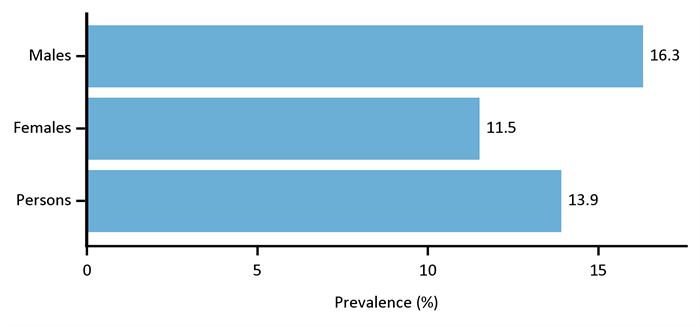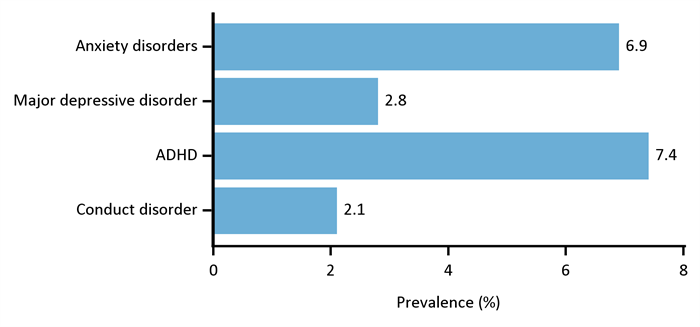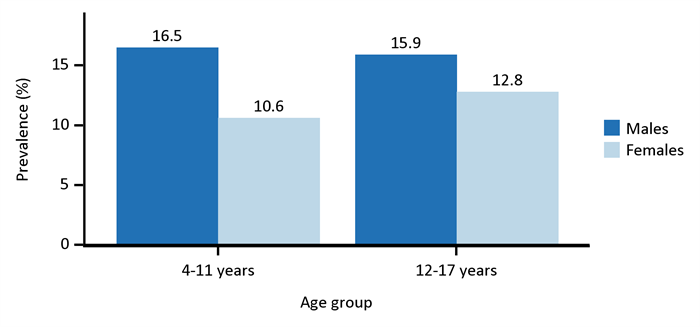Young Minds Matter (the second Australian Child and Adolescent Survey of Mental Health and Wellbeing) provides information on the prevalence of mental disorders in children and adolescents in Australia.
The prevalence of mental disorders is the proportion of children and adolescents in the population who meet DSM-IV criteria for a diagnosis of a mental disorder within the 12 months prior to the survey.
- Almost one in seven (13.9%) 4-17 year-olds were assessed as having mental disorders in the previous 12 months. This is equivalent to 560,000 Australian children and adolescents.
- Males were more likely than females to have experienced mental disorders in the 12 months prior to the survey (16.3% compared with 11.5%).
- ADHD was the most common mental disorder in children and adolescents (7.4%), followed by anxiety disorders (6.9%), major depressive disorder (2.8%) and conduct disorder (2.1%).
- Based on these prevalence rates it is estimated that in the previous 12 months 298,000 Australian children and adolescents aged 4-17 years would have had ADHD, 278,000 had anxiety disorders, 112,000 had major depressive disorder and 83,600 had conduct disorder.
- Almost one third (30.0% or 4.2% of all 4-17 year-olds) of children and adolescents with a disorder had two or more mental disorders at some time in the previous 12 months.
- Prevalence did not differ significantly with age for males (16.5% for 4‑11 year-olds and 15.9% for 12‑17 year‑olds), but was slightly higher in older females than younger females (10.6% for 4‑11 year‑olds and 12.8% for 12‑17 year‑olds).

Prevalence of mental disorders in 4-17 year-olds in the past 12 months

Prevalence of different types of mental disorders in the past 12 months in 4-17 year-olds

Prevalence of mental disorders in the past 12 months in 4-17 year-olds by sex and age group
